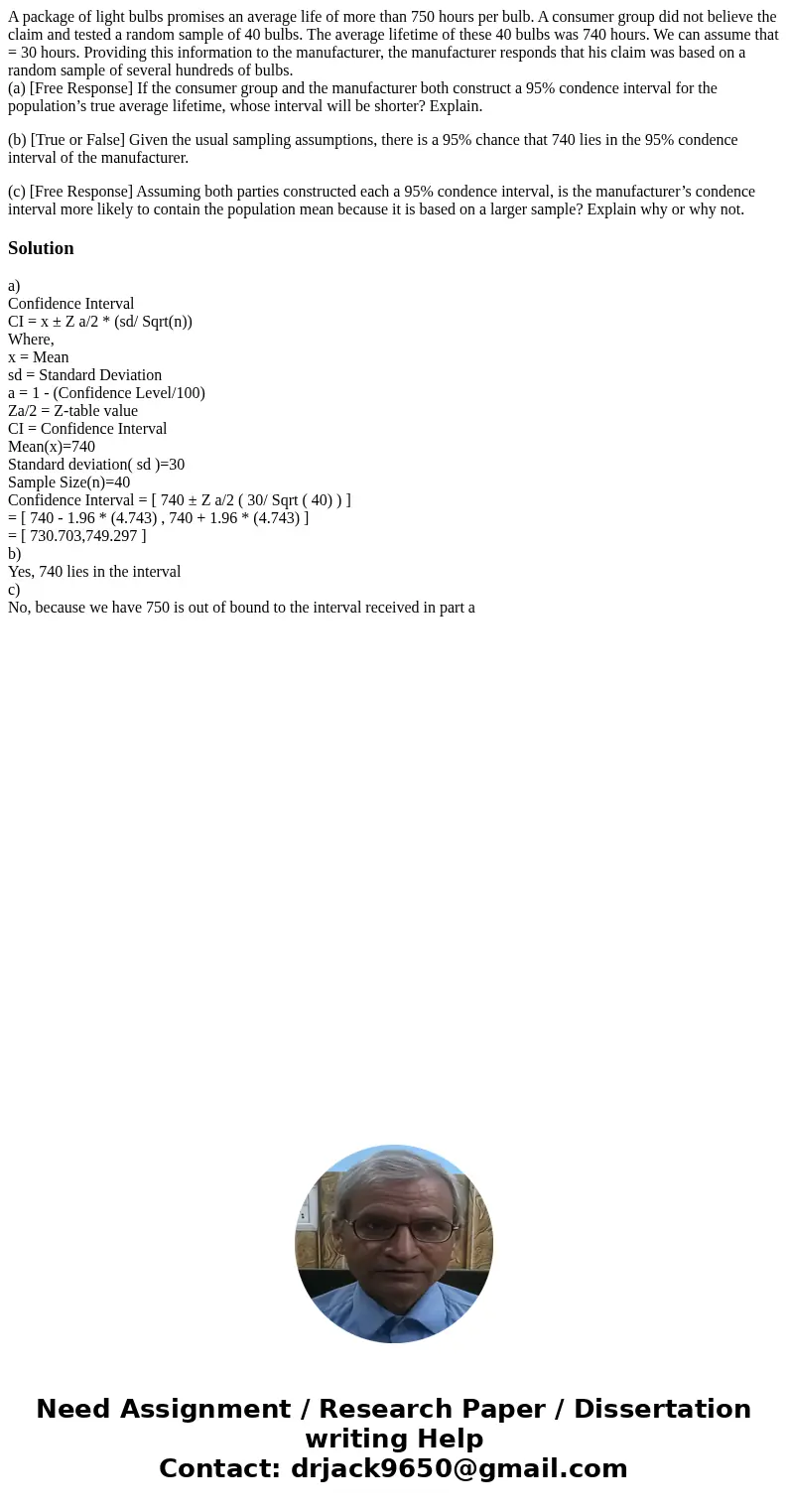A package of light bulbs promises an average life of more th
A package of light bulbs promises an average life of more than 750 hours per bulb. A consumer group did not believe the claim and tested a random sample of 40 bulbs. The average lifetime of these 40 bulbs was 740 hours. We can assume that = 30 hours. Providing this information to the manufacturer, the manufacturer responds that his claim was based on a random sample of several hundreds of bulbs.
(a) [Free Response] If the consumer group and the manufacturer both construct a 95% condence interval for the population’s true average lifetime, whose interval will be shorter? Explain.
(b) [True or False] Given the usual sampling assumptions, there is a 95% chance that 740 lies in the 95% condence interval of the manufacturer.
(c) [Free Response] Assuming both parties constructed each a 95% condence interval, is the manufacturer’s condence interval more likely to contain the population mean because it is based on a larger sample? Explain why or why not.
Solution
a)
Confidence Interval
CI = x ± Z a/2 * (sd/ Sqrt(n))
Where,
x = Mean
sd = Standard Deviation
a = 1 - (Confidence Level/100)
Za/2 = Z-table value
CI = Confidence Interval
Mean(x)=740
Standard deviation( sd )=30
Sample Size(n)=40
Confidence Interval = [ 740 ± Z a/2 ( 30/ Sqrt ( 40) ) ]
= [ 740 - 1.96 * (4.743) , 740 + 1.96 * (4.743) ]
= [ 730.703,749.297 ]
b)
Yes, 740 lies in the interval
c)
No, because we have 750 is out of bound to the interval received in part a

 Homework Sourse
Homework Sourse